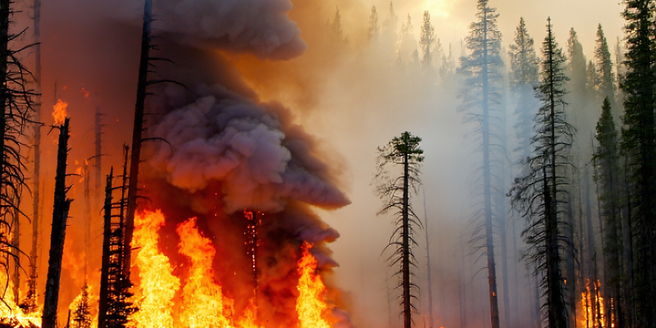
Understanding Carbon Monoxide Sources During Wildfires
During wildfire events, vast amounts of carbon monoxide (CO) are released into the atmosphere, posing significant health risks. The primary source of CO in wildfires is the incomplete combustion of natural materials such as wood and vegetation. As fires consume these fuels, they release CO alongside other hazardous pollutants. Unlike controlled burns or fires in contained environments, wildfires burn large areas rapidly, causing prolonged exposure to smoke for communities. Additionally, CO levels can vary depending on wind direction and fire intensity. Understanding these sources helps individuals and communities better prepare for and mitigate the dangers associated with wildfire smoke exposure, highlighting the need for effective monitoring and response strategies.
Health Impacts of Carbon Monoxide Exposure
Carbon monoxide is a colorless and odorless gas that can rapidly accumulate in the bloodstream and cause serious health problems. Its primary effect is to prevent oxygen from binding to hemoglobin, which can result in a lack of oxygen reaching vital organs and tissues. Health effects can range from mild symptoms such as headaches and dizziness to severe outcomes like impaired vision, confusion, and even loss of consciousness. Prolonged exposure or high concentrations of CO can be life-threatening. Vulnerable populations, including children, the elderly, and individuals with underlying health conditions, are particularly at risk. Recognizing the signs of CO exposure and seeking immediate medical attention is crucial to prevent long-term damage.
Recognizing Symptoms of Carbon Monoxide Poisoning
Recognizing the symptoms of carbon monoxide poisoning promptly is crucial to preventing severe health outcomes. Initial symptoms may mimic the flu, including headaches, dizziness, and nausea. As exposure continues, symptoms can escalate to confusion, blurred vision, and difficulty breathing. In severe cases, individuals may experience loss of consciousness or even death. Symptoms can often be overlooked, especially in wildfire settings where multiple airborne pollutants may be present. It is essential for individuals in affected areas to remain vigilant and seek medical attention if symptoms persist. Using CO detectors in homes and staying informed through local advisories can help identify and address exposure risks early.
Safety Measures to Reduce Carbon Monoxide Exposure
To reduce the risk of carbon monoxide exposure during wildfire season, several precautions can be implemented. Installing CO detectors in homes is a critical step in early detection and can save lives. People are advised to stay indoors with windows and doors closed whenever possible, using air purifiers to maintain indoor air quality. Masks designed to filter out fine particles can offer some protection but do not prevent CO inhalation. It’s crucial for individuals to avoid heavily polluted areas when smoke is present and remain informed via local broadcasts. Communities should also invest in emergency response planning and provide resources to ensure residents are adequately prepared for wildfire events.
Emergency Response and Treatment Options
Immediate response to carbon monoxide exposure is critical. If CO poisoning is suspected, individuals should move to fresh air immediately and contact emergency services. Quick removal from the source of CO can significantly mitigate health impacts. Medical treatment often involves administering oxygen through a mask, allowing rapid flushing of CO from the bloodstream. In severe cases, hyperbaric oxygen therapy may be necessary to more effectively displace CO from hemoglobin. Additionally, emergency responders equipped with CO detectors and appropriate safety gear are essential in assisting exposed individuals. Public health services play a crucial role in providing accurate information and facilitating access to emergency care and resources.
Community Preparedness and Education Initiatives
Community preparedness and education initiatives are vital in reducing carbon monoxide exposure risks during wildfire seasons. Local governments and health organizations should collaborate to provide clear guidelines and resources for residents. Educational campaigns can focus on the importance of CO detectors, recognizing symptoms of CO poisoning, and effective response actions. Schools, businesses, and community centers can participate in awareness programs to increase understanding and foster a culture of preparedness. Regular community drills and workshops can enhance emergency response capabilities, ensuring individuals know how to act during a wildfire. With comprehensive education and resources, communities can better protect themselves and reduce long-term health impacts from wildfire smoke exposure.
